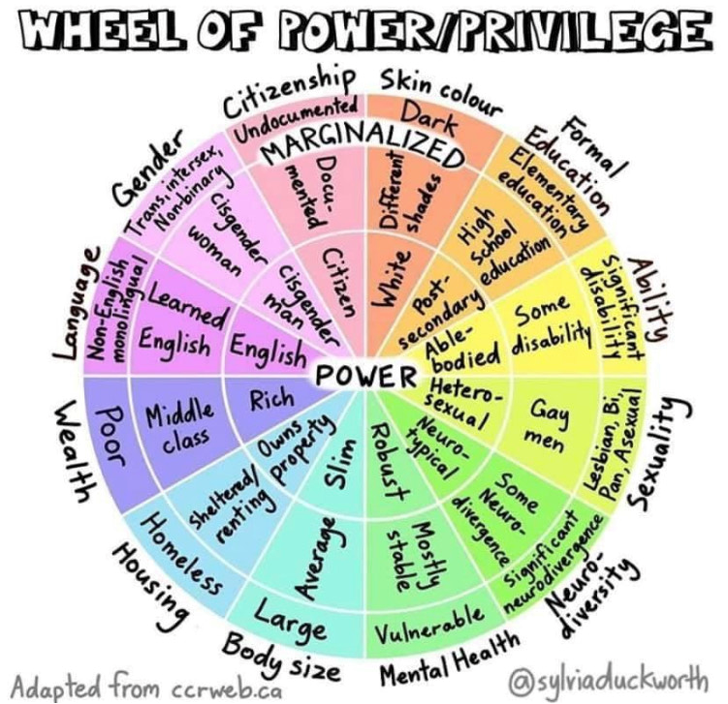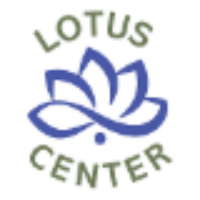Wheel of Power/Privilege

Continuing our exploration of intersectionality, we invite you to take a look at the graphic above, created by digital artist Sylvia Duckworth. Notice that as one’s identifiers get closer to the center of the circle, they are associated with power. As one’s identifiers come closer to the outside of the circle, they are more likely to experience marginalization.
Most of us will have identifiers that grant us power and marginalization at the same time. The different kinds of power and marginalization we all experience give us all unique needs from our community, and existing power structures. For example, the needs of an able-bodied, cisgender white man will differ vastly from a disabled, transgender person of color. While this may seem obvious, it can be a bit challenging to address a person’s needs taking into account all of their unique identities. Many of us were brought up learning the Golden Rule, to treat others as you would want to be treated. But, the two people we created earlier are likely to need different kinds treatment from their communities. When it comes to making our antiracism intersectional, we may be better off using the “Platinum Rule,” to treat others as they would want to be treated.
Did anything about the wheel of power and privilege surprise you? How do you feel about the way your own identities are shown on the wheel? Please share your thoughts with us in a comment below!
-Your Friends at Undoing Racism



This wheel of power/privilege is an excellent, simple diagram that clearly shows the power/privilege dynamics.
I’d love to have it as a poster and have it available for as many folks as possible to see it.
Comments are closed.